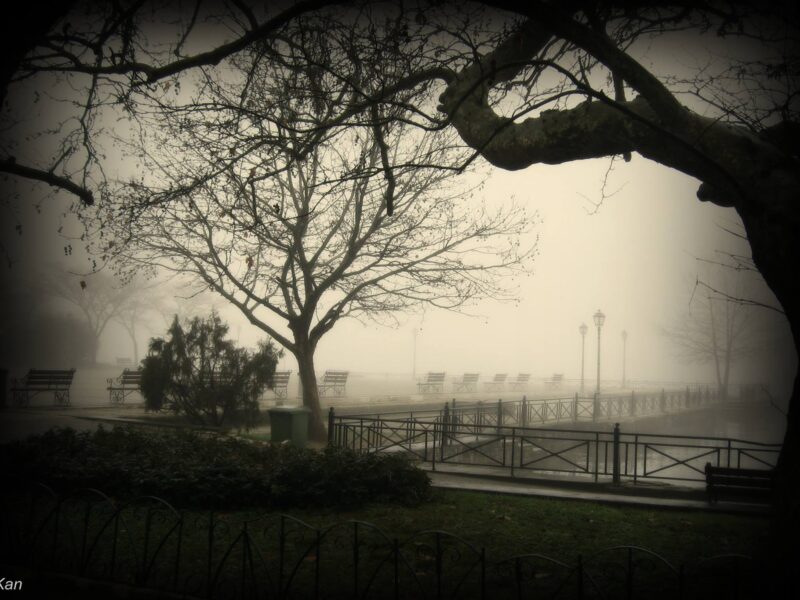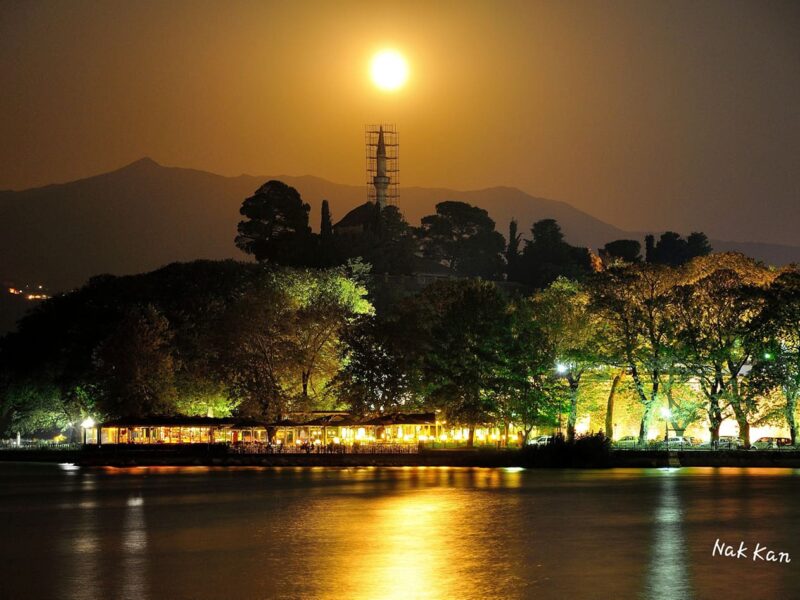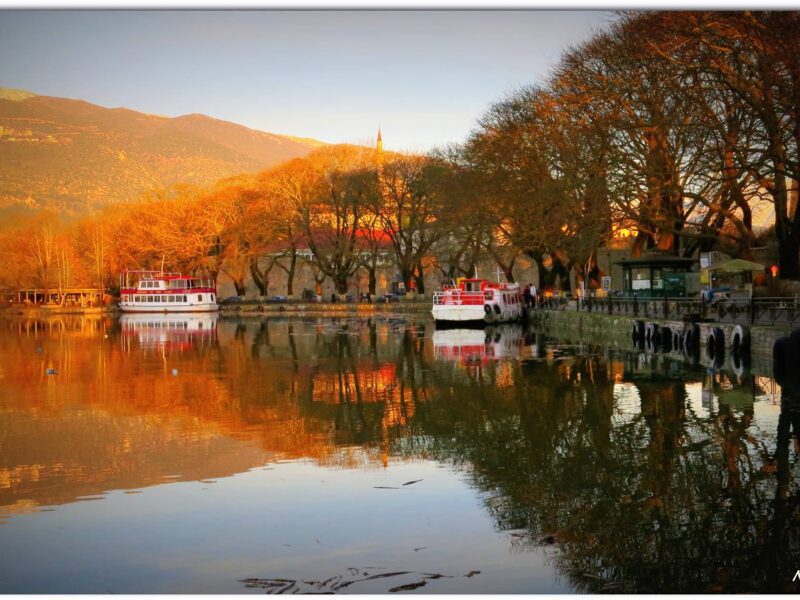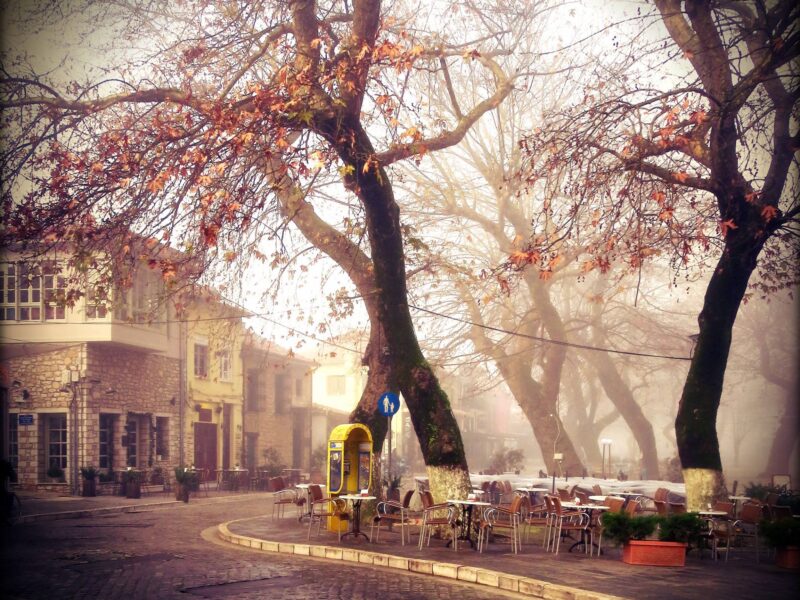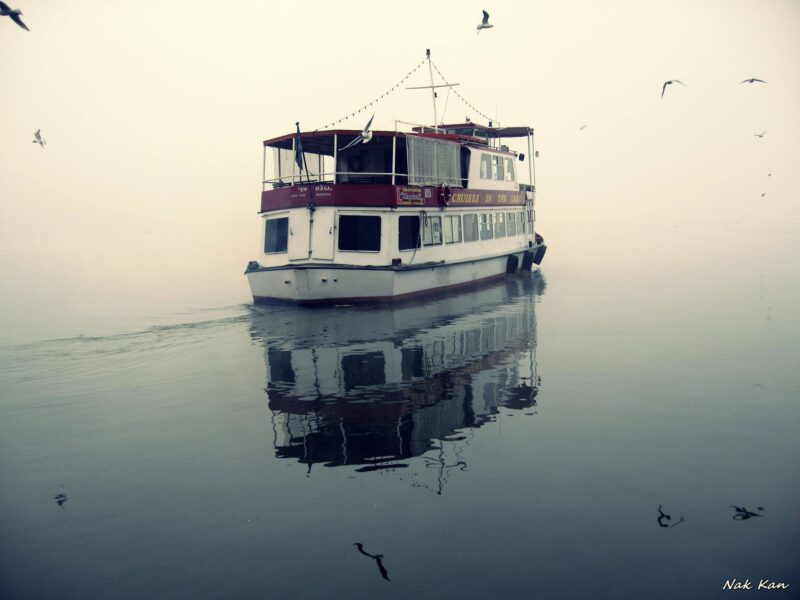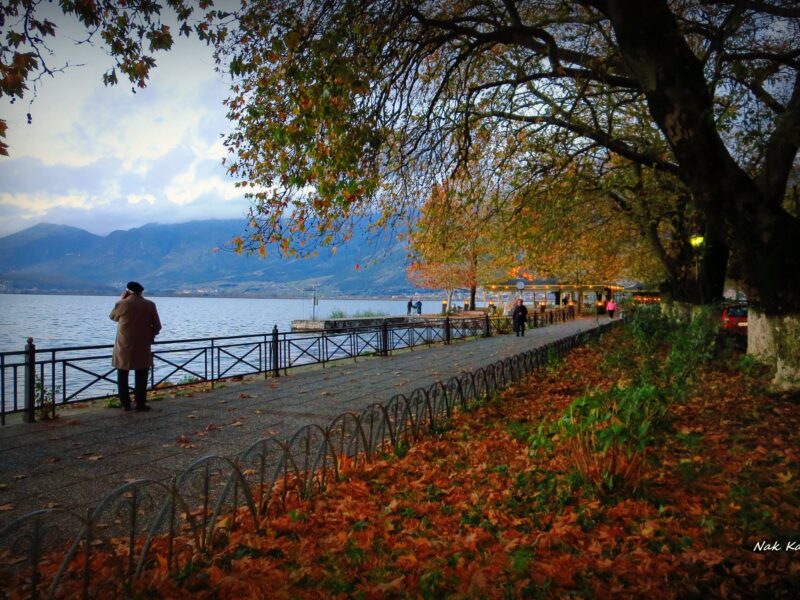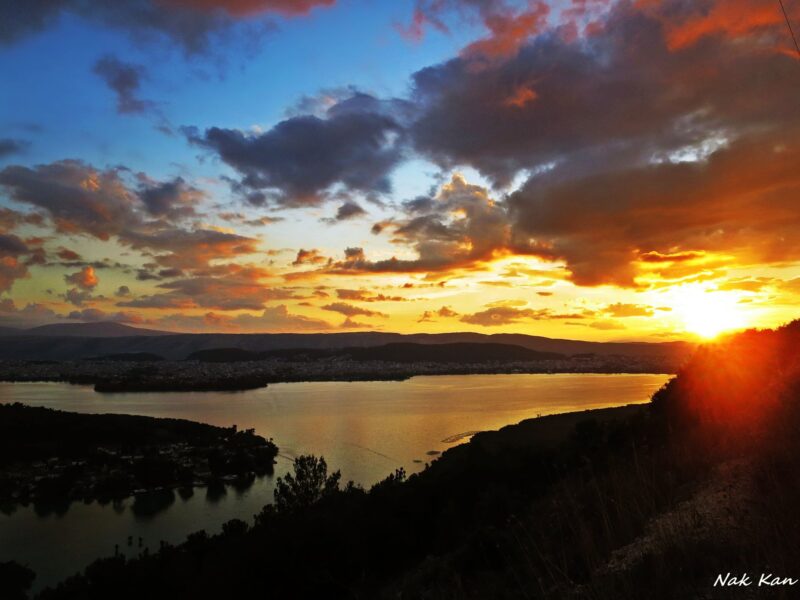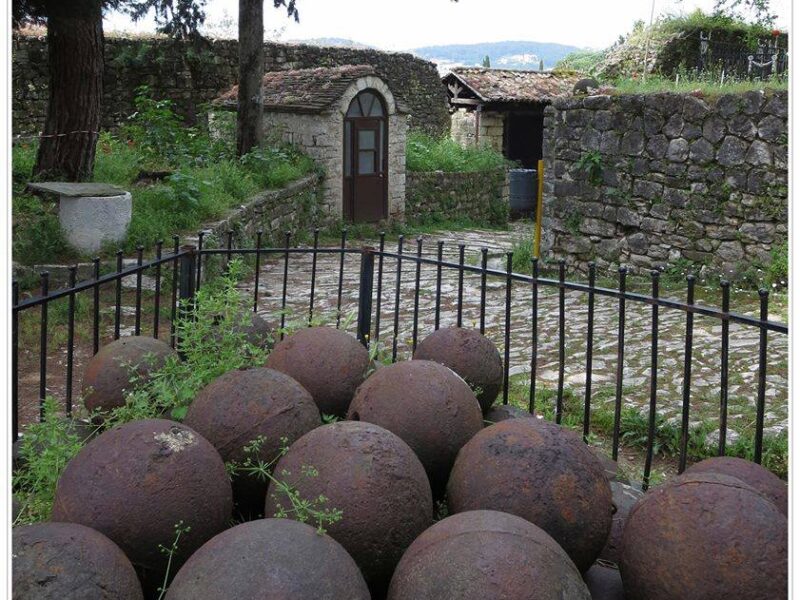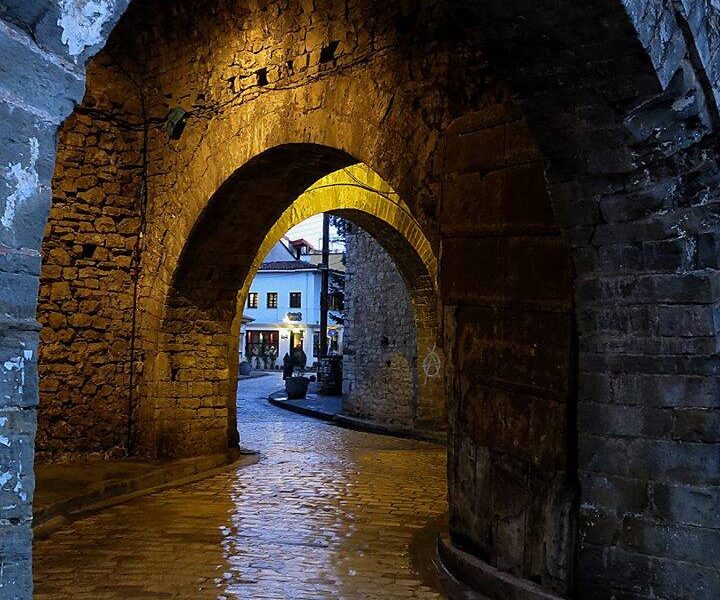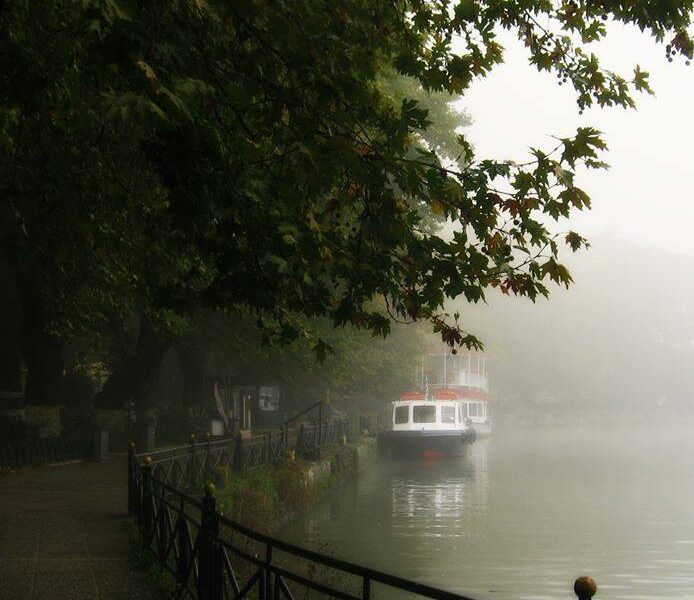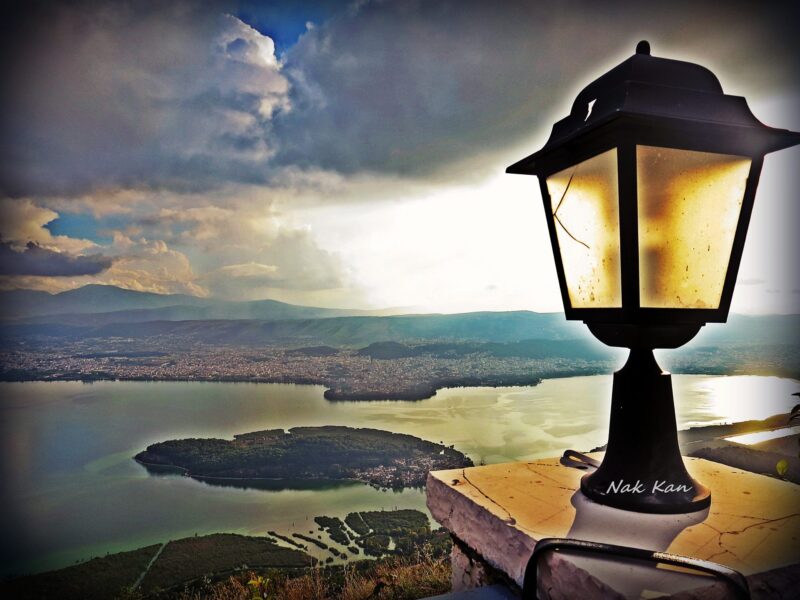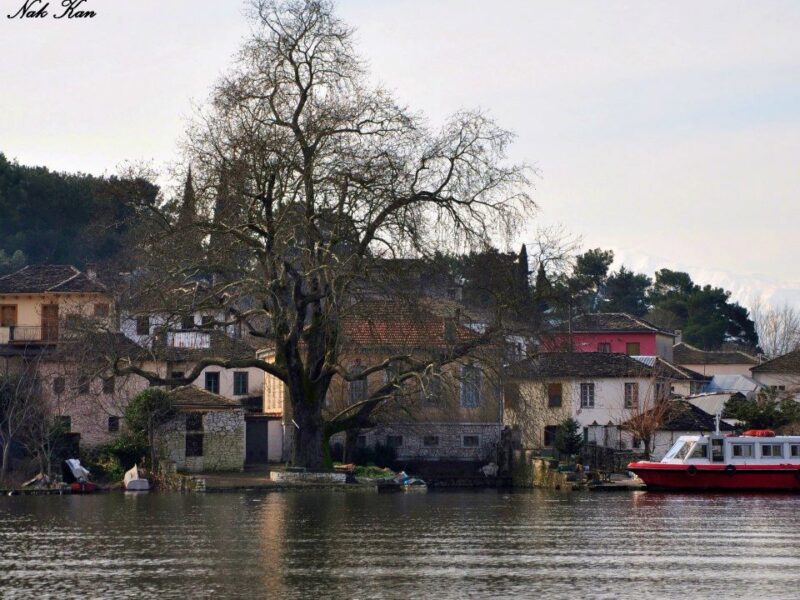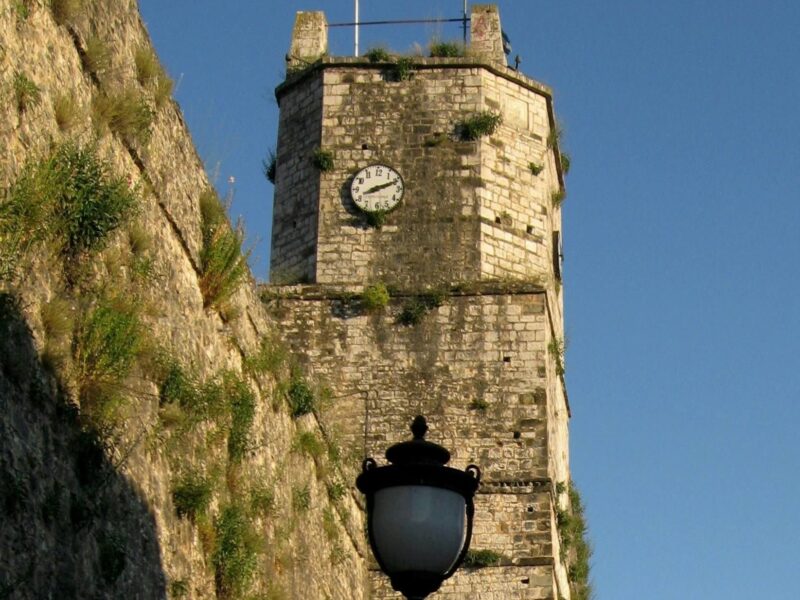Ioannina, often called Yannena within Greece, is the capital and largest city of the Ioannina regional unit and of Epirus, an administrative region in north-western Greece. According to the 2011 census, the city population was 65,574, while the municipality had 112,486 inhabitants. It lies at an elevation of approximately 500 metres (1,640 feet) above sea level, on the western shore of Lake Pamvotis (Παμβώτις). Ioannina is located 410 km (255 mi) northwest of Athens, 260 kilometres (162 miles) southwest of Thessaloniki and 80 km (50 miles) east of the port of Igoumenitsa in the Ionian Sea.
The city’s foundation has traditionally been ascribed to the Byzantine Emperor Justinian in the 6th century AD, but modern archaeological research has uncovered evidence of Hellenistic settlements. Ioannina flourished in the late Byzantine period (13th–15th centuries). It became part of the Despotate of Epirus following the Fourth Crusade and many wealthy Byzantine families fled there following the sack of Constantinople, with the city experiencing great prosperity and considerable autonomy, despite the political turmoils. Ioannina surrendered to the Ottomans in 1430 and until 1868 it was the administrative center of the Pashalik of Yanina. In the period between the 18th and 19th centuries, the city was a major center of the modern Greek Enlightenment. Ioannina was ceded to Greece in 1913 following the Balkan Wars.
The city is also characterized by various green areas and parks, including Molos (Lake Front), Litharitsia Park, Pirsinella Park (Giannotiko Saloni), Suburban Forest. There are two hospitals, the General Hospital of Ioannina “G. Hatzikosta”, and the University Hospital of Ioannina. It is also the seat of the University of Ioannina. The city’s emblem consists of the portrait of the Byzantine Emperor Justinian crowned by a stylized depiction of the nearby ancient theater of Dodona.
One of the most notable attractions of Ioannina is the inhabited island of Lake Pamvotis which is simply referred to as Island of Ioannina. The island is a short ferry trip from the mainland and can be reached on small motorboats running on varying frequencies depending on the season. The monastery of St Panteleimon, where Ali Pasha spent his last days waiting for a pardon from the Sultan, is now a museum housing everyday artefacts and relics of his period. There are six monasteries on the island: the monastery of St Nicholas (Ntiliou) or Strategopoulou (11th century), the Monastery of St Nicholas (Spanou) or Philanthropinon (1292), St John the Baptist (1506), Eleousis (1570), St Panteleimon (17th century), and of the Transfiguration of Christ (1851). The monasteries of Strategopoulou and Philanthropinon also functioned as colleges. Alexios Spanos, the monks Proklos and Comnenos, and the Apsarades brothers Theophanis and Nektarios are among those that taught there. The school continued its activities until 1758, when it was superseded by the newer collegial institutions within the city. The island’s winding streets are also home to many gift-shops, tavernas, churches and bakeries.
At the south-eastern edge of the town on a rocky peninsula of Lake Pamvotis, the castle was the administrative heart of the Despotate of Epirus, and the Ottoman vilayet. The castle was in constant use until the late Ottoman period and the fortifications underwent several modifications throughout the centuries. The most extensive alterations where conducted during the rule of Ali Pasha and were completed in 1815. Several monuments such as the Byzantine baths, the Ottoman baths, the Ottoman library, and the Soufari Sarai are found within the castle’s walls.There are two citadels in the castle. The south-eastern citadel, which bears the name Its Kale (Ιτς Καλέ, from Turkish Iç Kale, ‘inner fortress’)[citation needed] is where the Fethiye Mosque, the tomb of Ali Pasha, and the Byzantine Museum are located. The north-eastern citadel is dominated by the Aslan Pasha Mosque and also contains a few other monuments dating from the Ottoman period. The old Jewish Synagogue of Ioannina is within the walls of the castle and is one of the oldest and largest buildings of its type surviving in Greece.
Several religious and secular monuments survive from the Ottoman period. In addition to the two mosques surviving within the walls of the castle, two further mosques are preserved outside the walls. The Mosque and Madrassa of Veli Pasha are in the centre of the city, and Kaloutsiani mosque can be found in the area of the city with the same name. The now derelict “House of the Archbishop”, near the football stadium, is the only old mansion that survived the fire of 1820. Some of the notable landmarks in the city centre also date from the late Ottoman period. The municipal clock tower of Ioannina, designed by local architect Periklis Meliritos, was erected in 1905 to celebrate the Jubilee of sultan Abdul Hamid II. The adjacent building houses the VIII Division headquarters. It dates from the late 19th century. Some neoclassical buildings such the post office, the old Zosimaia School, the Papazogleios Weaving School, and the former Commercial School date from the late Ottoman period as do a few arcades in the old commercial centre of the city like Stoa Louli and Stoa Liampei. The churches of the Assumption of the Virgin at Perivleptos, Saint Nicholas of Kopanon and Saint Marina were rebuilt in the 1850s by funds from Nikolaos Zosimas and his brothers on the foundations of previous churches that perished in the great fire of 1820. The Cathedral of St Athanasius was completed in 1933. It was built on the foundations of the previous Orthodox cathedral which was destroyed in the fires of 1820. It is a three-aisled basilica.
Museums and galleries
Some of the most important museums of the city are within the walls of the castle. The Municipal Ethnographic Museum is hosted in Aslan Pasha Mosque in the north-east citadel. It is divided into three departments, each one representing one of the main communities that inhabited the city: Greek, Ottoman Muslim, and Jewish. The Byzantine Museum is in the south-eastern citadel of the castle. The museum opened in 1995 in order to preserve and present artefacts of the wider region of Epirus covering the period from the 4th to the 19th century. The newest addition to the city’s museum, the silversmithing museum, is also in the south-eastern citadel. It is housed in the western bastion of the citadel and outlines the history of the art of silversmithing in Epirus. Outside the walls of the castle, close to the town centre, one will find the Archaeological Museum of Ioannina. It is in the Litharitsia fortress area. It includes archaeological exhibits documenting the human habitation of Epirus from prehistoric times through the late Roman Period, with special emphasis placed on finds from the Dodona sanctuary. The Municipal Art Gallery of Ioannina (Dimotiki Pinakothiki) is housed in the Pyrsinella neoclassical building dating from around 1890. The gallery’s collection displays major modern works of painters and sculptors, collected through purchases and donations from various collectors and artists. This includes about 500 works, paintings, drawings, prints, pictures and sculptures. The Pavlos Vrellis Greek History Museum is 10 kilometres (6.2 mi) south of the city. It is a wax museum which covers events and personalities from Greek history as well as the history of the region and is the result of the personal work of Pavlos Vrellis.
Transport
- Ioannina is served by Ioannina National Airport.
- The Egnatia Odos highway, part of the E90, passes by Ioannina. It links the west coast port of Igoumenitsa with the borders.
- Air Sea Lines flew from Lake Pamvotis to Corfu with seaplanes. Air Sea Lines has suspended flights from Corfu to Ioannina since 2007.
- Long-distance buses (KTEL) travel daily to Athens (6–6.5 hours) and Thessaloniki (3 hours).

